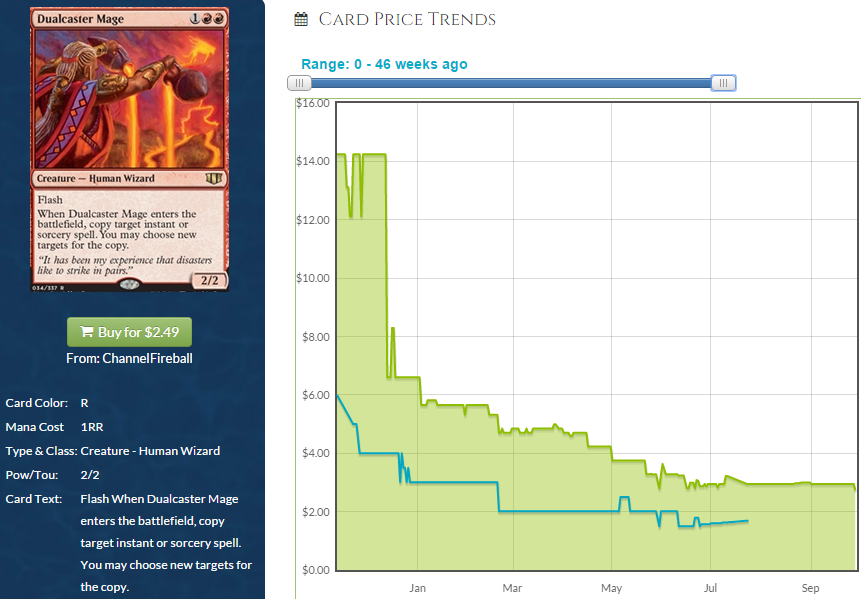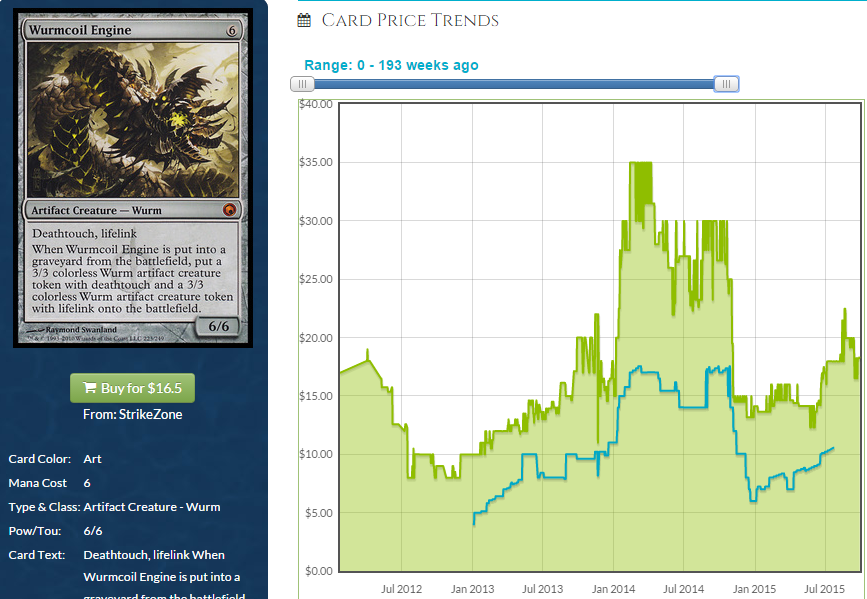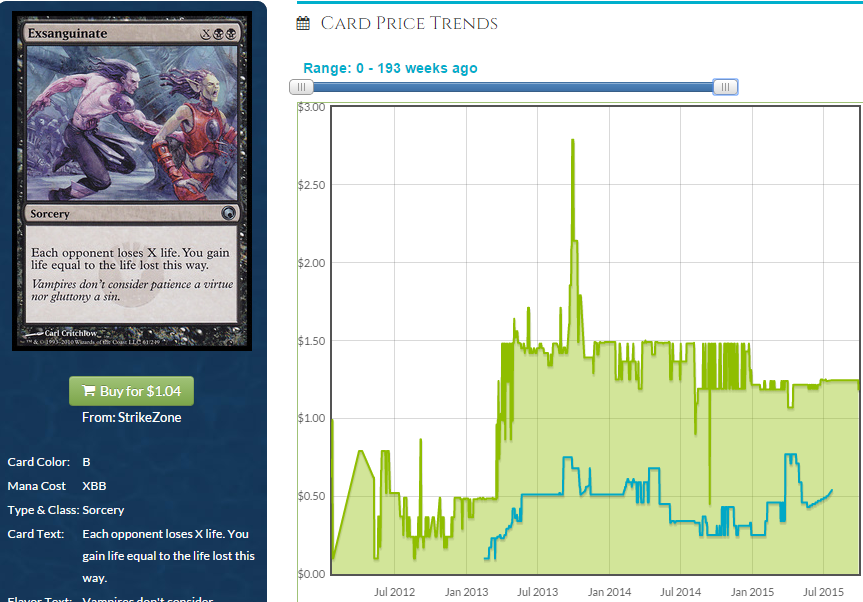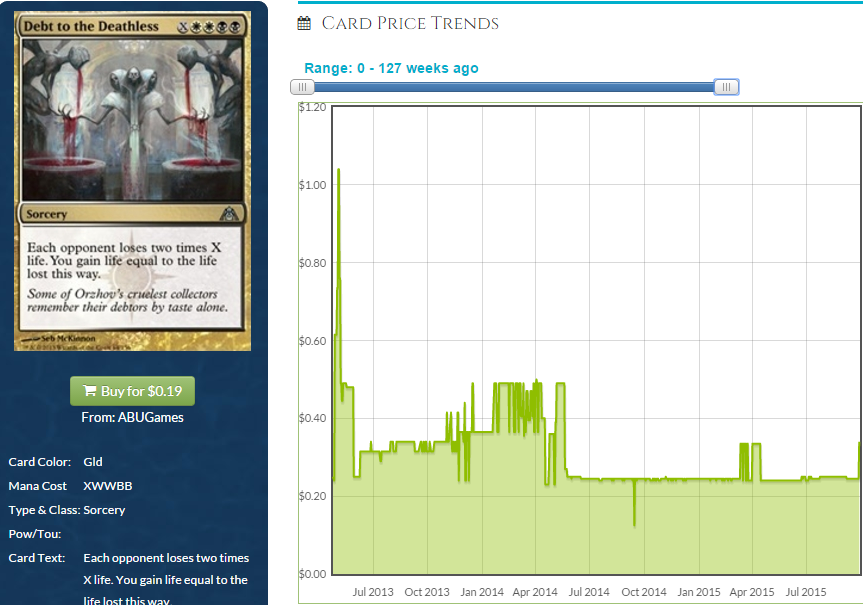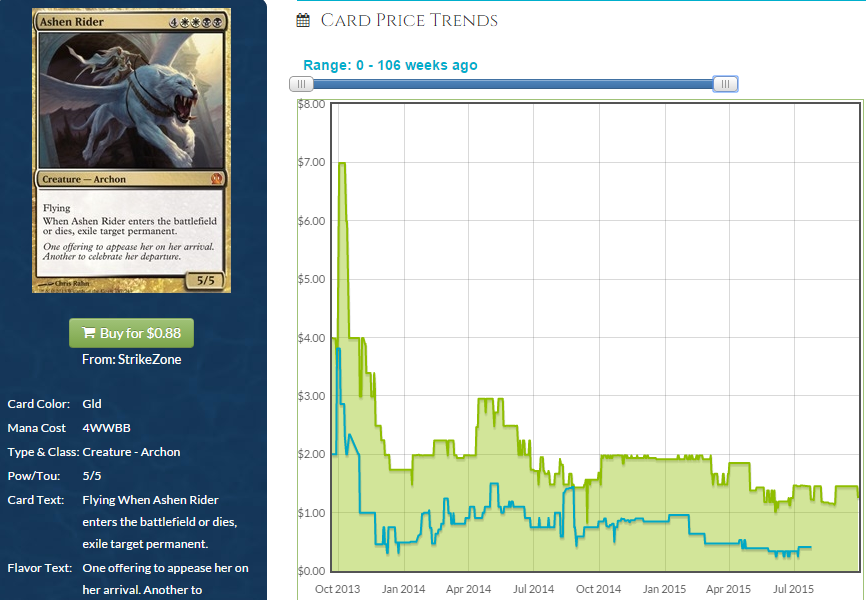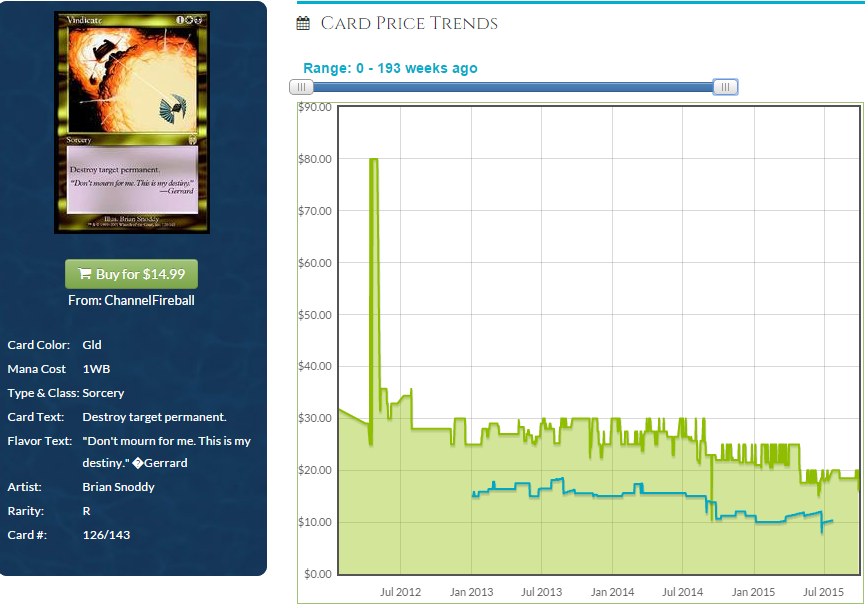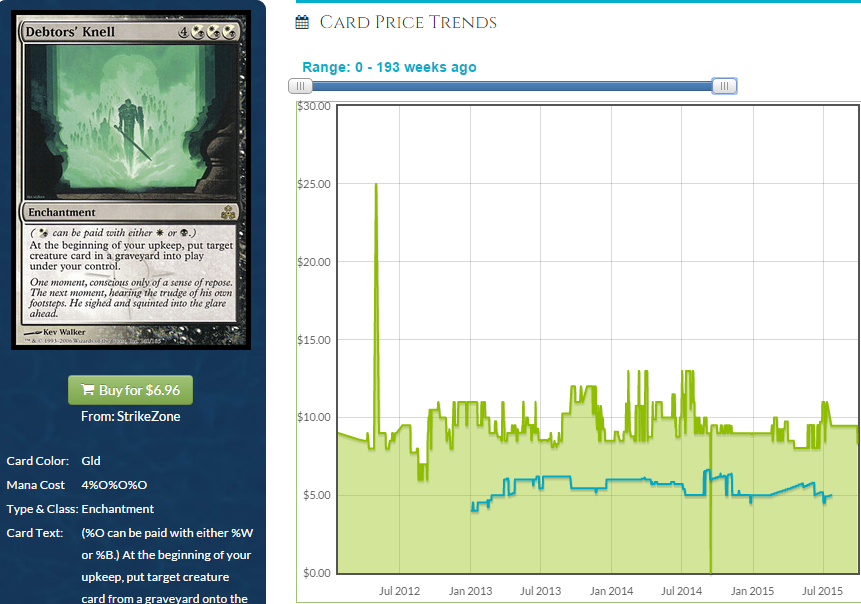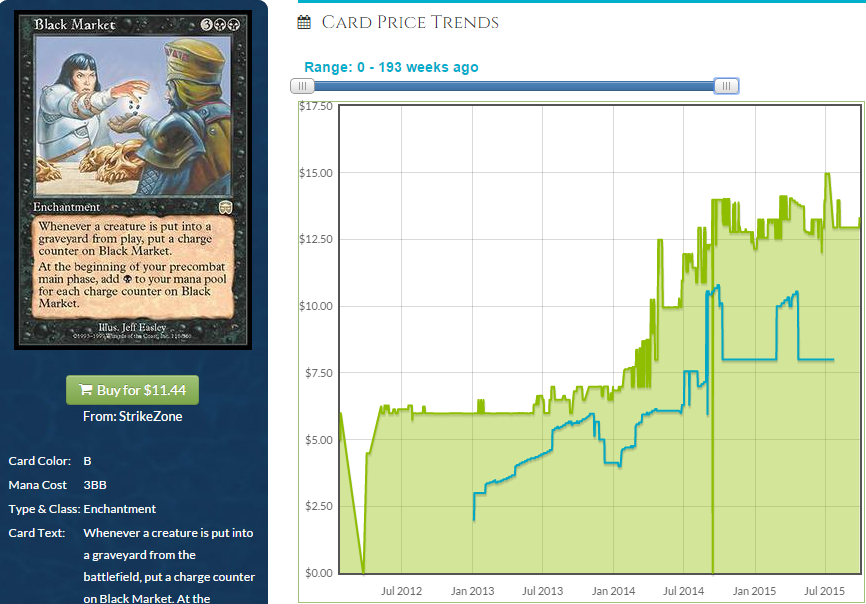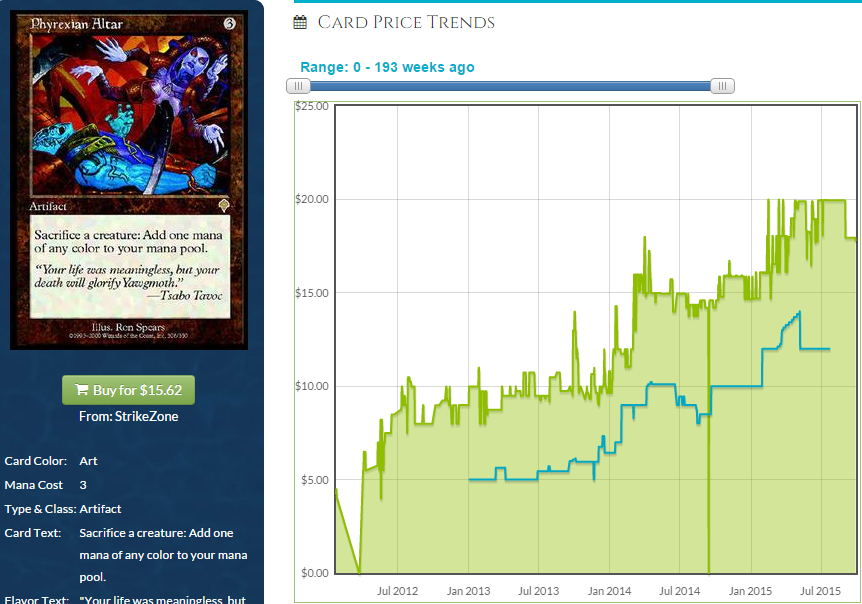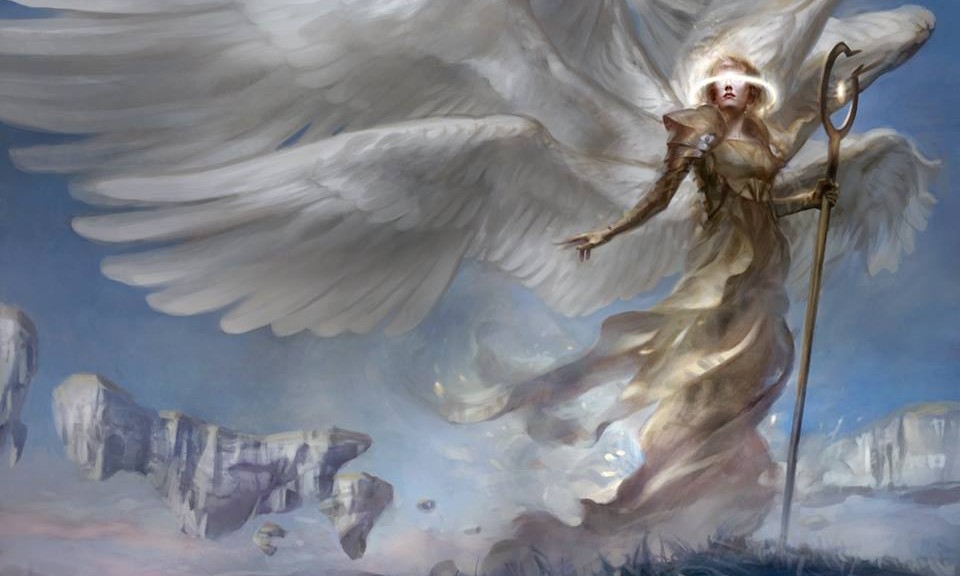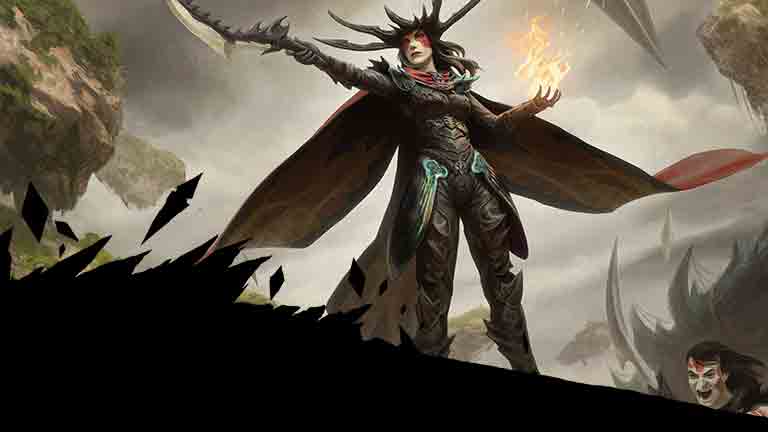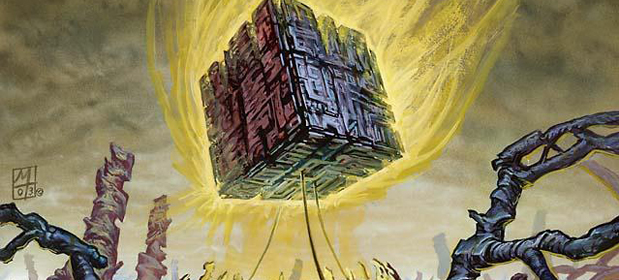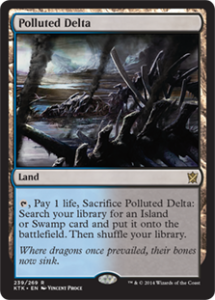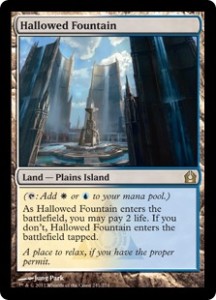This is the question everyone should be asking about their investments, both before and after they make them:
Is it safe?
Well? How do we make safe investments in EDH?
Okay, so I’m a few sentences in and I already hate my internal voice reading this article. You remember that episode of Seinfeld where George got the book on tape because he hated the sound of his own voice but had to read a book about risk, and then the guy on the book on tape sounded like him somehow, and I don’t remember how the episode ended because it was like 20 years ago, but I bet Jerry did something annoying and you should really just watch Curb Your Enthusiasm instead? I hate how my voice sounds reading that first paragraph.
Also, before I forget, I didn’t address the title of the article the way none of you were hoping I would. I think today I want to talk about the upcoming Commander sealed product, because it’s going to tank some prices and we want to be ready. Not only that—it’s going to tank prices in a pretty big way, and I think now is the time to buy or sell to get ahead of it. We have gone a full week without any spoilers and everyone is getting antsy. You know some tool is going to swipe a deck and spoil all of it or something like that pretty soon, so let’s get out ahead of that, shall we? EDH players are salivating, talking about the cards they want to get reprinted. Theirs is a Magical Christmasland list, but it’s not a bad idea to look at what they are thinking because staples are bound to take the biggest hit.
Here is what I would sell and what I think is probably safe.
Okay, false alarm. I think we would benefit by looking at how Wizards typically builds these decks by looking at a list from each “generation” of EDH sealed product.
Counterpunch from 2011
1 Barren Moor
1 Command Tower
1 Evolving Wilds
10 Forest
1 Golgari Rot Farm
1 Orzhov Basilica
8 Plains
1 Rupture Spire
1 Secluded Steppe
1 Selesnya Sanctuary
8 Swamp
1 Temple of the False God
1 Tranquil Thicket
1 Vivid Grove
1 Vivid Marsh
1 Vivid Meadow
1 Aquastrand Spider
1 Celestial Force
1 Chorus of the Conclave
1 Dark Hatchling
1 Deadly Recluse
1 Fertilid
1 Golgari Guildmage
1 Hornet Queen
1 Karador, Ghost Chieftain
1 Monk Realist
1 Nantuko Husk
1 Penumbra Spider
1 Sakura-Tribe Elder
1 Scavenging Ooze
1 Selesnya Evangel
1 Selesnya Guildmage
1 Shriekmaw
1 Sigil Captain
1 Spawnwrithe
1 Spike Feeder
1 Squallmonger
1 Symbiotic Wurm
1 Teneb, the Harvester
1 Vampire Nighthawk
1 Vish Kal, Blood Arbiter
1 Yavimaya Elder
1 Acorn Catapult
1 Afterlife
1 Alliance of Arms
1 Attrition
1 Aura Shards
1 Awakening Zone
1 Bestial Menace
1 Cobra Trap
1 Cultivate
1 Darksteel Ingot
1 Death Mutation
1 Doom Blade
1 Fists of Ironwood
1 Footbottom Feast
1 Golgari Signet
1 Harmonize
1 Hex
1 Hour of Reckoning
1 Lightning Greaves
1 Mortify
1 Necrogenesis
1 Nemesis Trap
1 Oblivion Ring
1 Orzhov Signet
1 Selesnya Signet
1 Skullclamp
1 Sol Ring
1 Soul Snare
1 Storm Herd
1 Syphon Flesh
1 Tribute to the Wild
1 Vow of Duty
1 Vow of Malice
1 Vow of Wildness
This deck had fewer than ten reprints at rare, none of them much more than a dollar at the time. The big money here was Scavenging Ooze; a new card that Wizards also wanted to introduce into Legacy, which worked wonders. People tore into these decks, depressing cards like Awakening Zone, Attrition, and Skullclamp, though they all rebounded. If you had asked EDH players to talk about cards they thought would be in a WBG deck, you would have heard answers like Debtors’ Knell, Pernicious Deed, Vindicate, and Overgrown Tomb. We didn’t get that. We got a bunch of pretty cheap rares.
Nature of the Beast from 2013
1 Boros Garrison
1 Boros Guildgate
1 Command Tower
1 Contested Cliffs
1 Drifting Meadow
1 Evolving Wilds
8 Forest
1 Forgotten Cave
1 Gruul Guildgate
1 Homeward Path
1 Jungle Shrine
1 Khalni Garden
1 Mosswort Bridge
5 Mountain
1 Naya Panorama
1 New Benalia
1 Opal Palace
4 Plains
1 Rupture Spire
1 Secluded Steppe
1 Selesnya Guildgate
1 Selesnya Sanctuary
1 Slippery Karst
1 Smoldering Crater
1 Temple of the False God
1 Tranquil Thicket
1 Vitu-Ghazi, the City-Tree
1 Vivid Crag
1 Archangel
1 Avenger of Zendikar
1 Baloth Woodcrasher
1 Crater Hellion
1 Deadwood Treefolk
1 Drumhunter
1 Eternal Dragon
1 Gahiji, Honored One
1 Grazing Gladehart
1 Krosan Tusker
1 Krosan Warchief
1 Magus of the Arena
1 Mayael the Anima
1 Mold Shambler
1 Naya Soulbeast
1 Rakeclaw Gargantuan
1 Rampaging Baloths
1 Ravenous Baloth
1 Spellbreaker Behemoth
1 Spitebellows
1 Terra Ravager
1 Valley Rannet
1 Behemoth Sledge
1 Boros Charm
1 Cultivate
1 Curse of Chaos
1 Curse of Predation
1 Curse of the Forsaken
1 Darksteel Mutation
1 Druidic Satchel
1 Fiery Justice
1 Fireball
1 Fires of Yavimaya
1 From the Ashes
1 Harmonize
1 Hull Breach
1 Mystic Barrier
1 Naya Charm
1 One Dozen Eyes
1 Rain of Thorns
1 Restore
1 Savage Twister
1 Seer’s Sundial
1 Slice and Dice
1 Slice in Twain
1 Sol Ring
1 Spawning Grounds
1 Sprouting Vines
1 Street Spasm
1 Swiftfoot Boots
1 Tempt with Discovery
1 Tower of Fortunes
1 War Cadence
1 Warstorm Surge
1 Where Ancients Tread
1 Witch Hunt
1 Wrath of God
Two years later, the value is still expected to come mostly from the new cards. Rares like Where Ancients Tread, Magus of the Arena, Crater Hellion… If you’d asked EDH players in 2013 before this came out what they expected to be reprinted in a WRG deck, they would have said things like Knight of the Reliquary, Azusa, and Vigor.
Built from Scratch from 2014
1 Goblin Welder
1 Epochrasite
1 Myr Retriever
1 Myr Sire
1 Bottle Gnomes
1 Cathodion
1 Junk Diver
1 Palladium Myr
1 Pilgrim’s Eye
1 Tuktuk the Explorer
1 Dualcaster Mage
1 Feldon of the Third Path
1 Solemn Simulacrum
1 Flametongue Kavu
1 Beetleback Chief
1 Ingot Chewer
1 Steel Hellkite
1 Wurmcoil Engine
1 Spitebellows
1 Hoard-Smelter Dragon
1 Warmonger Hellkite
1 Myr Battlesphere
1 Pentavus
1 Tyrant’s Familiar
1 Bosh, Iron Golem
1 Bogardan Hellkite
1 Faithless Looting
1 Whipflare
1 Scrap Mastery
1 Incite Rebellion
1 Blasphemous Act
1 Impact Resonance
1 Chaos Warp
1 Volcanic Offering
1 Word of Seizing
1 Magmaquake
1 Starstorm
1 Everflowing Chalice
1 Panic Spellbomb
1 Sol Ring
1 Wayfarer’s Bauble
1 Fire Diamond
1 Ichor Wellspring
1 Liquimetal Coating
1 Mind Stone
1 Mycosynth Wellspring
1 Ruby Medallion
1 Swiftfoot Boots
1 Commander’s Sphere
1 Jalum Tome
1 Pristine Talisman
1 Unstable Obelisk
1 Trading Post
1 Caged Sun
1 Dreamstone Hedron
1 Loreseeker’s Stone
1 Spine of Ish Sah
1 Darksteel Citadel
1 Great Furnace
1 Arcane Lighthouse
1 Buried Ruin
1 Dormant Volcano
1 Flamekin Village
1 Forgotten Cave
1 Ghost Quarter
1 Phyrexia’s Core
1 Reliquary Tower
1 Smoldering Crater
1 Temple of the False God
29 Mountain
This is a best-case scenario for reprints, and the deck’s value was actually kind of absurd, to the point of depressing the prices of good, new cards, ironically. Instead of Dualcaster Mage crushing Wurmcoil Engine, look what happened.
If you had asked people in 2014 what would have gone in a mono-red EDH deck and if you were charitable and told them it would be artifact-themed, they would have said stuff like Goblin Welder or Junk Diver or Metalworker or Bosh. I doubt they would have expected to get most of that list, plus Wurmcoil, plus Junk Diver, plus a silly planeswalker, plus Epochrasite.
We’re starting to see these decks, at least one or two of them per cycle, be pretty good. Is it really so ridiculous to think we could get a Pernicious Deed, Dack Fayden, Vindicate, Gisela, or… Wizards has crapped on Simic cards forever. What’s even the best Simic card? Prophet of Kruphix at $1? Zegana? Zegana, probably. Or Momir Vig. Still, why you gotta poop on Simic and make a ton of terrible cards and then like 10 good ones so we have to play the good ones and then people say, “Why does every Simic player always play Prophet of Kruphix?” and we’re like “BECAUSE WE $%^&ING HAVE TO!”
What are conceivable reprints for EDH decks in a universe where Wizards reprints Wurmcoil Engine? Will Wizards want to repeat a scenario where the reprints don’t get cheaper but they make new cards and old cards alike practically toilet paper?
So what do the enemy color pairings do, anyway? This wiki article talks about what each color pairing is good at and we can probably pick a few strong possibilites for a Wurmcoil-tier reprint and think about getting out of them or picking up cards that are not likely to be reprinted which could go in one of these deck. While Wurmcoil’s price didn’t go down a ton, it did make red, artifact-based decks appealing and the price is rebounding because people want to pick up every loose copy to play with.
So what are enemy-colored pairings all about? We’ll get as far as we can today and finish up next week. How’s that sound?
White / Black
Life Drain
Life drain is a great way for black/white to get people. However, a lot of those cards have been printed into the ground and/or were in Eternal Bargain, the deck with Oloro. That had a strong “life total changes matter” theme. Still, provided we do see something like that, there are some cards I’d expect in the deck.
Exsanguinate is a $1 uncommon that will be trash forever if it’s in a decent EDH deck. If we see any life drain in the WB deck, I expect this to be in the mix. Death Grasp has been printed to absolute death and this is an older card that hasn’t seen a second printing despite being considered a staple for a while. This card is very good.
This is a more powerful card, but it’s narrower. It’s more expensive for small amounts of mana, but once you start to really pump mana in, this does work. Too bad there is no money to be made or lost here.
Another Felidar Sovereign or Divinity of Pride reprinting seem unlikely, given how recently they were both reprinted. A life drain theme could give them upside, but I expect Felidar Sovereign to go up regardless, and again, Oloro’s deck makes me think it’s not super likely we’ll see this theme in an upcoming deck. Still, we need to investigate every lead.
In the unlikely event we do get a life drain theme, a card I expect to not be in the deck but get some real upside in price is this guy.
Serra Ascendant was a mistake, as having a turn-one, one-mana Baneslayer is silly for EDH. I doubt Wizards would reprint this in EDH sealed product despite its price approaching $20. This card will continue to climb in price until reprinted. Do you think Wizards would put this in EDH sealed product? I don’t, either.
This seems pretty safe to me. Even if it is reprinted, it could pull a Wurmcoil and bounce right back up—unless there’s value in the rest of the deck.
Exiling
WB sure is good at exiling stuff. Sometimes white brings it back, sometimes it doesn’t. Black just makes stuff disappear. This is a bit of a subtheme for white-black, but there aren’t a ton of great reprints possible. Do you think Vindicate will be in the deck? It’s possible that we see Unmake, Castigate, Merciless Eviction, etc.
Merciless Eviction is a great card for reprinting in this deck if we see this subtheme at all, which is too bad, because this was a card I liked long-term. It deals with a lot of stuff and its mana cost isn’t prohibitive in EDH the way it was, a bit, in Standard.
Angel of Despair has already gotten a Commander reprinting, and at $3 to $4, I think it could potentially get another nod. This was excluded from FTV Angels. What we could also see in its place is a card that has no reprintings.
If Ashen Rider gets reprinted, boo. If this doesn’t get reprinted, though, we have an opportunity. It could be a while before this is considered for a reprinting, as WWBB makes it a little tough to jam in three- or four-color decks which means the best time to reprint this in an EDH product is now. If it isn’t reprinted, we will be very close to rotation and these will be at their floor. This card is busted. While there are ways other than an EDH product to reprint this, I think dodging a reprinting in Commander 2015 means this card is a must-buy. I’m going deep on these if they’re not included in the deck. They’ll be cheap, they’ll have dodged a very likely reprint opportunity, and they will still be ridiculous in EDH. Sure, it’s not an angel, but it’s also nuts.
I would like to think the white-black deck will avoid the obvious life draining theme, but only because Wizards just did that with Oloro. Instead, I imagine the list will get a little more creative, perhaps doing something with Teysa, Orzhov Scion and similar cards. I expect Teysa in the 99 with a brand new commander at the helm. If Darkest Hour isn’t in the deck, expect that to be a card people “discover” as more people build toward a deck like this. Lingering Souls, Twilight Shepherd, cards that grant persist or undying like Cauldron of Souls, and Mikaeus, the Unhallowed will be in demand or reprinted.
If Wizards disappoints me and goes back to a WB life drain strategy, I won’t be surprised, really, and I covered what to do given that eventuality. Vizkopa Guildmage, the Sanguine Bond/Exquisite Blood combo, and even cards like Tainted Sigil will be in high demand. I’ll talk more about those eventualities when we see spoilers.
Eyes Like Donuts
I’m getting near the point where your eyes glaze over, and I only got through my preamble and one color pairing. I expected to get a little farther today, but that is okay. Since we’re ahead of the curve, we can take our time and be thorough with this subject matter and really do our due diligence.
I have a little wiggle room to talk what we expect the “Wurmcoil” of the WB deck to potentially be. Now, Wizards could spread the value over a lot of cards that will go from $5 to $7 down to $2 to $4, or print a Containment Priest-tier card that will depress the rest of the cards in the deck. However, if this deck does have a reprint in WB that is $15 to $18 like Wurmcoil was, what do we think we could see?
This is around the right price, but this seems kind of underwhelming in EDH. Sure, it’s very versatile, but I don’t know if you make most of the value of an EDH set end up in a card that could have its deck slot occupied by Mortify or Unmake and have the deck be roughly as good. Vindicate is $14 better than Mortify in Legacy. I’m not so sure it is in EDH.
This seems likelier, paired with a $5-ish card, perhaps? This isn’t the same price point, but spreading that value over two cards may do more good overall, putting two staples in players’ hands instead of just one. Attrition, maybe? If we insist on looking at $15-ish cards, there are a few that are WB staples.
Black Market is out of control and pretty good in a WB deck. If you’re sacrificing a lot of stuff to a creature like Teysa, blowing up a lot of permanents with removal, or just letting stuff die like it tends to in EDH, this card is dumb. There aren’t too many cards like this. Braid of Fire is another, that benefit from the removal of the mana burn rule. You’ve seen what pure EDH demand has done to this unfair card and a reprinting would be a nice relief valve for the price and give a few more players access. It synergizes with just about any WB strategy, also, rewarding you for sacrificing creatures or fueling a big Exsanguinate. This would be a good reprint.
“This card is HOW MUCH?” –Non-EDH players.
Phyrexian Altar is a great choice, too. It fits well into a WB deck that emphasizes sacrificing, life-draining, or even both. It’s a card that more players would play if they could afford it, and Wizards could give it some sick new art depicting a newer hero than Tsabo. This card is pure EDH and the price reflects that reality.
Grab the Cushion
I think we can put a pin in it for this week. Next week, I’ll skip the preamble and launch right into it. We’ll see if we can’t take down two color combinations next week and two the week after. Seems like a good way to split it up to me.
What did I miss? What did I overstate? What do you hope to see in a white-black EDH deck? For those who don’t care about EDH, why? A poop rare like Black Market is now $18 and you’re off fighting over how many pennies you can make on Woodland Wanderer. Don’t be clowns—at least pay attention to what casuals are doing. Who would you rather trade with? That’s what I thought.
Until next week!

